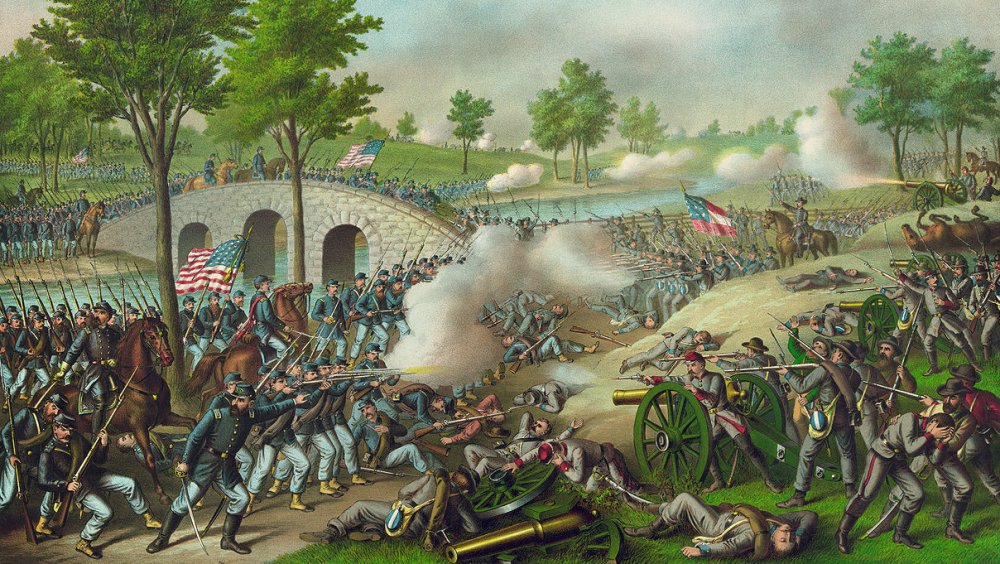The Truth About The Deadliest Battle In American History
Private Ezra Stickley of the 5th Virginia Infantry didn't leave the Battle of Antietam in one piece, and his horse fared far worse. As documented by the National Park Service, Stickley said of his ordeal, "The third shell struck and killed my horse and bursting, blew him to pieces, knocked me down, of course, and tore off my right arm..." Lieutenant Matthew Graham of the 9th New York volunteers wondered how long he could hold his finger in the air "before it would be shot off, for the very air seemed full of bullets."
Fought on September 17, 1862, at Maryland's Antietam Creek, the Battle of Antietam decided the fates of men and nations alike. History explains that in the lead-up to the conflict, Abraham Lincoln wrestled with the question of when to issue his Emancipation Proclamation. A solid win would permit him to speak from a position of strength. Otherwise, his proclamation might look like verbal flailing by a desperate president. Confederate General Robert E. Lee, meanwhile, looked to push farther north and plunge a dagger into the heart of the Union.
Across the pond, France and Great Britain waited with bated breath for a Civil War victor to emerge. Faced with a cotton shortage, the countries started growing short on patience and contemplated backing the Confederacy. If Lee succeeded, his victory could have rippled across the ocean. But for the soldiers who fought, Antietam Creek would become a sea of corpses.
The bloodbath at Antietam Creek
At the Battle of Antietam, Union General George McClellan's Army of the Potomac clashed with Rebel General Robert E. Lee's Army of Virginia. This wasn't the first encounter between these two generals. They had previously danced during the Peninsula Campaign, per History, but McClellan had two left feet and got outmaneuvered by Lee, ending the Union's attempt to sack the Confederate capital of Richmond, Virginia. Antietam was McClellan's turn to turn back Lee.
History writes that Union troops outnumbered the Confederates two to one. Lee's troops were war-weary and under the weather. However, Mclellan had a tendency to overestimate the enemy. The Union shot first, and an ungodly number of bullets followed. The forces fought across a cornfield but men were mowed down like grass. Eight hours of fighting amassed 15,000 casualties. A farm lane known as "Sunken Road" was renamed "Bloody Lane" after 5,000 men were killed or wounded there within three hours.
The battle raged at close range for twelve hours, racking up roughly 23,000 casualties. The estimated death toll topped 3,650. Lee's troops retreated, and McClellan could claim a Pyrrhic victory. Abraham Lincoln took the win, but also took issue with McClellan's approach to combat or rather, how he didn't approach it. In defiance of Lincoln, McLellan refused to pursue the fleeing Lee in the ensuing months. Lincoln unveiled his Emancipation Proclamation days after Antietam, and in November, he also liberated McClellan from his post.

